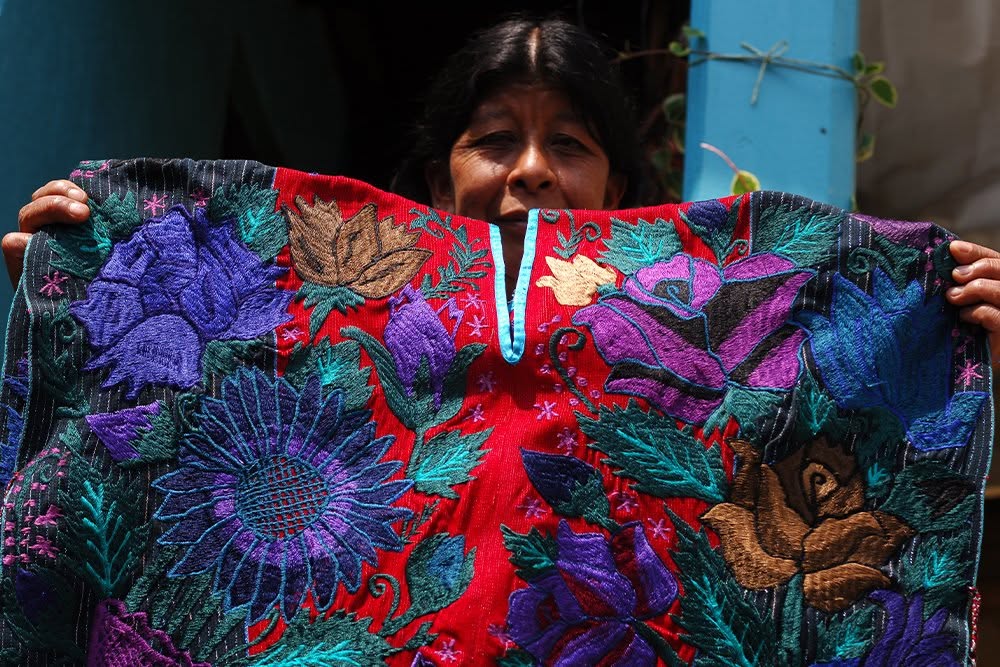Zinacantán
A high mountain town of greenhouses and fantastic textile production, the landscape seems entirely dedicated to flowers, fruit, and better ways of depicting a relationship between people and the clouds.

Zinacantán is a Tzotzil town just about ten km outside of San Cristóbal de la Casas. At an even higher altitude, the town is a bit more austere, and no where near as affected by the onslaught of modern tourism as is neighboring and very famous San Cristóbal. Tzotzil Maya people represent 99% of the population here. Proud of their town and culture, they may seem a little defensive of the town and its unique cultural role. In some sense, San Cristóbal rise to international prominence has come at a cost to local people and ways of life, and for those interested, Zinacantán can seem the perfect alternative.
Zinacantán means place of bats in the Nahuatl language. Nahuas conquered the territory in the 1480s. Residents of the town refer to themselves as Sots\'leb in their own language. It means people of the bats. And you\'ll here the Tzotzil language spoken widely here as some residents don\'t get by in Spanish.
The town economy is focused mostly on the cultivation of flowers and on textiles. The green houses extend in every direction into the surrounding hills. The woven textiles produced by the flowers, plant life and on ancient traditions that remain in evidence around nearly every corner. Flowers and textiles represent a tremendous part of that culture, but the presence of the carefully maintained churches mean that have adapted to many changes over the centuries, too.
The central church is the Temple of San Lorenzo Mártir. It was damaged in a 2017 earthquake but has been painstakingly restored. The faithful attend to a mix of Roman Catholic and Maya beliefs that is evident in much of the furnishings, art, and decor. Floriculture, including the cultivation of roses, chrysanthemums and carnations, will be evident everywhere in the church, too. The same can be said of the few artisan workshops that will have you in. Most are devoted to weaving and textiles, and some very fine works can be had here near their very source.
Most visitors will arrive to Zinacantán via San Cristóbal. The two are connected by combi vans which can whisk travelers along the mountainous route in about 20 minutes. There are some tour operators in San Cristóbal who will provide guided tours too. This can be especially helpful for those with little or no Spanish.